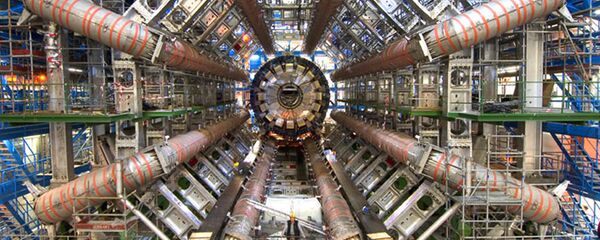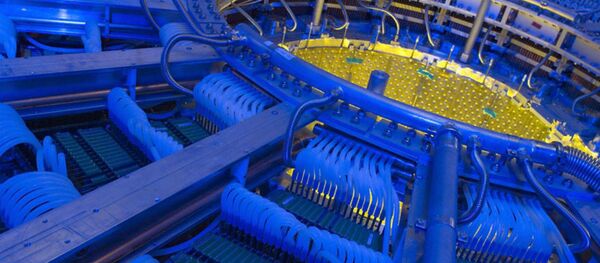If proven in reality, beyond the chalkboard-covering equations that support its existence mathematically, a whole new class of bizarre particles would be revealed that exist outside of established subatomic theory.
According to Chris Quigg, a theoretical physicist with the Fermi National Accelerator Laboratory near Chicago, Illinois, the "discovery may well happen," cited by Gizmodo.
To get to the idea of a tetraquark one must first dive deep into the atom, composed of protons, neutrons, and electrons. Protons and neutrons are further divided (the electron stands alone) into subatomic particles called quarks.
There are, according to physicists, six types of quarks, and they have been assigned names, masses, and electrical charges.
Here's where an arbitrary sorting regime — necessary to explain the unexplainable — takes over.
Those atomic building blocks, the protons and neutrons, are themselves comprised of ‘up' and ‘down' quarks, and those two have been shown to have the lightest mass of any subatomic particle.
The four less common — and heavier — quarks in the six-quark lineup are referred to as 'strange,' ‘charm,' ‘bottom,' and ‘top' (denoted in mass from lightest to the heaviest).
Each of the six known quarks has an antimatter mirror image called an antiquark (of course!), and it is the same subatomic particle, but with an opposite electrical polarity.
Currently, the best theoretical understanding of quarks and antiquarks posits that they can only be aligned in groups of two or three. They cannot exist alone.
But what about that aforementioned four-particle arrangement, the tetraquark, we hear you ask?
This is where the weird gets weirder, as researchers with Switzerland's Large Hadron Collider (LHC) announced in July the discovery of a new three-quark alignment, which they promptly dubbed the ‘Ξcc+++‘ (for a "doubly charged, doubly charmed xi particle," natch).
The amusingly named Ξcc++ arrangement consists of a light ‘up' quark and two heavy ‘charm' quarks. There remains some debate, however, as "most of these particles" (the ones with three quarks) "containing two heavy quarks, ‘charm' or ‘beauty,' have not yet been found," according to physicist Patrick Koppenburg of Nikhef, the Dutch National Institute for Subatomic Physics, in a July conversation with Gizmodo.
"This is a first in a sense," Koppenburg asserted.
Now, bolstered by the expectation that a three-quark particle exists, coupled with a more-or-less precise determination of its mass, two separate groups ran two different equations to confirm that a four-quark particle — the tetraquark — could also exist.
In new papers published in Physical Review Letters, the two teams both happily showed that they had found that a four-quark particle consisting of two ‘bottom' quarks, an anti-'up' quark, and an anti-'down' quark were shown to be theoretically — that is, on paper — possible.
"The things we're talking about are so weird that they couldn't be something else," said Fermi's Quigg.
All the physicists must now do is to identify a tetraquark in the wild, as an authentic tetraquark discovery would confirm suppositions from as far back as 1964 that suggest ways in which subatomic particles behave.
Independent mathematical confirmation of the theoretical basis for the existence of tetraquarks from two different approaches has naturally increased confidence in their eventual discovery.
"I think we have pretty great confidence that the doubly-b tetraquark could exist," agreed Quigg, adding, "It's just a matter of looking."






